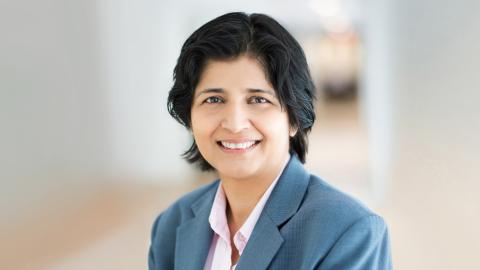__I want every Indian citizen to know: the United States of America will not simply be cheering you on from the sidelines. We will be right there with you, shoulder to shoulder. Because we believe in the promise of India. And we believe that the future is what we make it__. - President Obama, Nov. 8, 2010
Just as the second half of the 20th century was characterized by America's Atlantic partnership, the India-U.S. relationship will be the defining feature of the 21st century.
Indians applaud President Obama's open appreciation and acknowledgement not only of Indian history and culture, but of the independent path India took toward prosperity. This path, which included a socialist economy and non-alignment, was one of the key causes for estrangement between these two democracies during the Cold War era.
Acknowledging that "those days are over," when India and U.S. were on different sides, President Obama emphasized that India is "indispensable" to America's vision for the future. Stating that India and U.S. share regional and global security interests, share the desire for an open international economic system and seek a just and sustainable global order.
India is one of the fastest growing economies in the world today and American companies want to benefit from the Indian economic boom. Bilateral trade today stands at $61 billion and American foreign investment in India is approximately $16 billion. However, only 10 percent of India's imports come from the U.S. and only 2 percent of American exports go to India--in effect the same as what goes to Netherlands, a country whose population equals that of India's financial capital, Mumbai. Growth in trade would benefit both American and Indian markets. The recent announcement of over $14 billion in trade deals for American companies will potentially create over 50,000 jobs in the U.S.
The potential for collaboration between the U.S. and India has grown exponentially in various fields of research and development. With the removal of Indian defense and space organizations from the "entity list," partnerships can be forged between the companies of both countries. Joint research in the field of green energy is another arena, as is American assistance in the fields of agricultural productivity, weather and crop forecasting and water harvesting.
As one of the few long-standing democracies in Asia, India shares deep values with the United States. The 3 million-strong Indian-American diaspora has enriched American life for decades and contributed in all spheres of American politics, economy and academia. Further, over 100,000 Indian students come to study in the U.S. every year, and when most of them return to India they carry back with them American ideas and American understanding, which helps to deepen the bonds between the two countries. Rantan Tata, the head of one of India's oldest and largest companies, Tata Sons, recently announced a $50 million donation to his alma mater Harvard University.
The security dimension of the U.S.-India partnership is also critical as reflected in the death of American citizens in the deadly Mumbai attacks of November 2008. The two countries have military-to-military ties, deepening arms sales and a common desire to defend the domains of cyber and outer space. Counter-terrorism cooperation is at an all-time high, and American intelligence support was appreciated at the recent Commonwealth Games in New Delhi.
Both the U.S. and India desire a stable and peaceful Afghanistan and fear the growth of radical Islamist groups, including the Taliban, Al Qaeda, Lashkar-e-Taiba and other such organizations. India has long stated that a stable and democratic Pakistan was in India's vital interests and that peace in the region is India's goal. India and the U.S. are also likely to take a similar view of the global security architecture.
For decades Indian policy makers viewed American policy as that of an off-shore balancer to counter so-called Indian hegemony in South Asia. Starting with the Bush administration, American officials began to view India as an emerging global power. In his speech before the Parliament of India, President Obama asserted that "India is not simply emerging; India has already emerged." Further, President Obama emphasized that the U.S. looked forward to Indian engagement in southeast Asia and east Asia, as well as an Indian role in Africa.
While soundly endorsing New Delhi's bid for a permanent seat on the UN Security Council, the American President stated that "with increased power comes increased responsibility." President Obama asked for Indian collaboration in the fields of nuclear non-proliferation, climate change, freedom, human rights and democracy. Stating that India has often shied away from dealing with these issues, President Obama's words were directed at the Indian policy elite.
A highly successful trip from the Indian and American point of view, this does not mean that all policy disagreements in the relationship have disappeared. Differing views on relations with Pakistan, India's policy on Iran, climate change and protectionism still remain.
However, as President Obama stated, despite the many differences there is an underlying "spirit of partnership between our nations, that even as we honor the histories which in different times kept us apart, even as we preserve what makes us unique in a globalized world, we can recognize how much we can achieve together."















